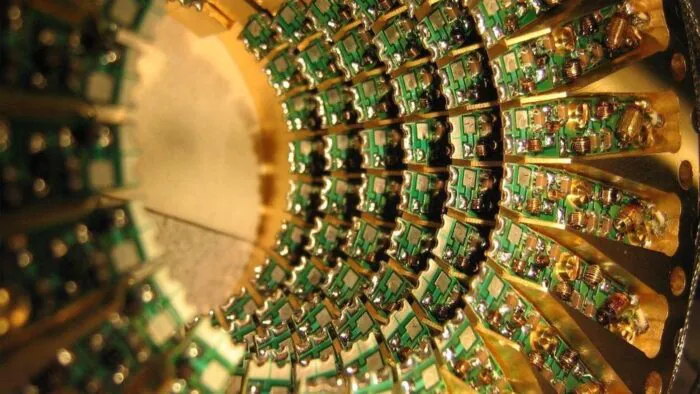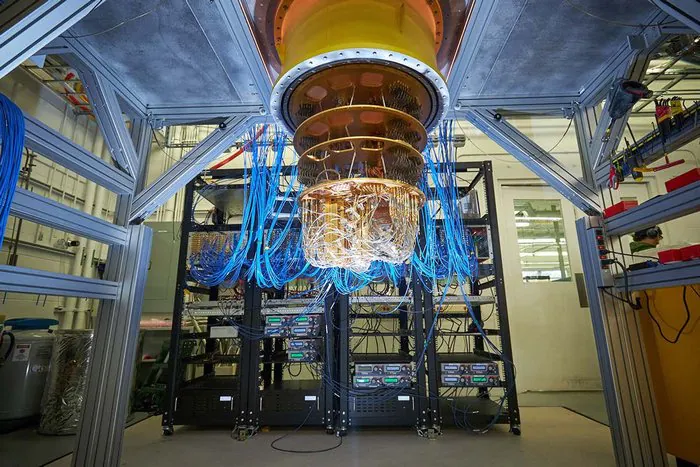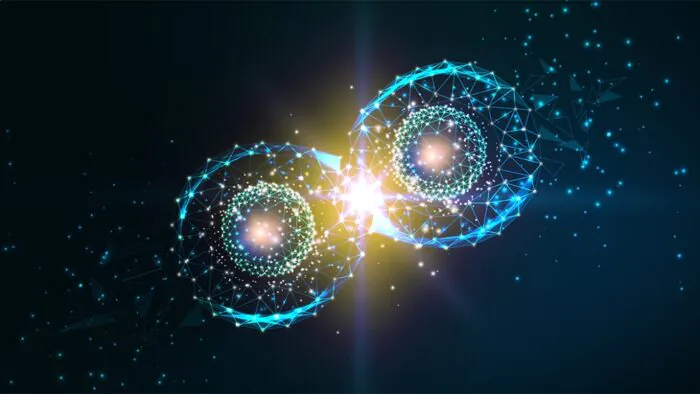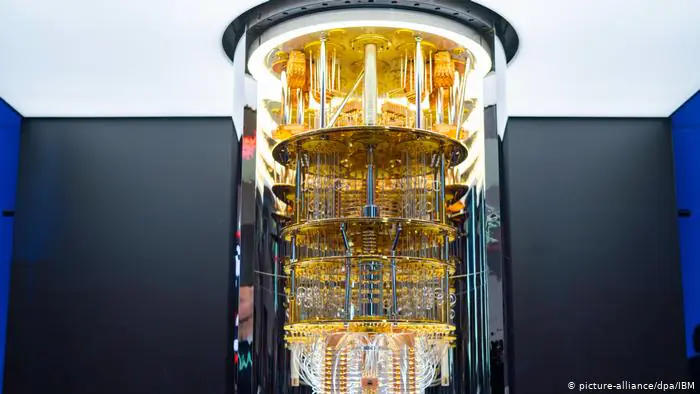© ROOT-NATION.com - Use of content is permitted with a backlink.
Back in the 1920s, quantum mechanics, the theory underlying everything from the behavior of atoms to the operation of quantum computers, was on its way to gaining widespread acceptance. But one mystery remained: sometimes quantum objects, such as electrons, atoms and molecules, behave like particles, and sometimes like waves. And sometimes they even behave like particles and waves at the same time. Therefore, when studying these quantum objects, it has never been clear which approach scientists should use in their calculations.

Sometimes scientists had to assume that quantum objects are waves in order to get the right result. In other cases, they had to assume that the objects were indeed particles. Sometimes any approach worked. But in other cases, only one approach led to the correct result, and the other led to a fictitious result. The history of this problem goes back a long way, but recent experiments have shed new light on this old question.
Quantum history
In the double-slit experiment of the same name, first conducted by Thomas Young in 1801, light behaved like waves. In this experiment, a laser beam is directed at a double slit, and then they look at the resulting pattern. If light consisted of particles, one would expect two light blocks in the form of slits. As a result, a lot of small blocks of light are obtained, arranged in a characteristic order. Placing a double slit in the water stream would lead to the same pattern. As a result, this experiment led to the conclusion that light is a wave.
Then, in 1881, Heinrich Hertz made an amusing discovery. When he took two electrodes and applied a sufficiently high voltage between them, sparks appeared. It is normal. But when Hertz shone on these electrodes, the spark voltage changed. This was explained by the fact that the light knocked electrons out of the electrode material. But, oddly enough, the maximum velocity of the knocked-out electrons did not change if the intensity of light changed, but changed in accordance with the frequency of light. This result would be impossible if the wave theory were correct. In 1905, Albert Einstein had a different solution: light was actually a particle. All this was unsatisfactory. Scientists prefer one theory that is always true to two theories that are sometimes true. And if the theory is true only sometimes, then we would like to at least be able to say under what conditions it is true.

But that was exactly the problem of discovery. Physicists did not know when to consider light or any other object as a wave, and when as a particle. They knew that some things cause undulating behavior, such as the edges of crevices. But they didn’t have a clear explanation of why this was the case, or when to use any theory.
This mystery, called wave-particle duality, persists to this day. But a new study may clarify the situation a little. Scientists at the Korean Institute of Fundamental Sciences have shown that the properties of a light source affect how much it is a particle and how much it is a wave. Thanks to a new approach to studying this problem, they have paved a path that may even lead to improvements in quantum computing. At least that’s the idea.
How to make particles and waves
In the experiment, the scientists used a semi-reflective mirror to split the laser beam into two parts. Each of these rays hits the crystal, which in turn produces two photons. In total, four photons are obtained, two from each crystal.
The scientists sent one photon from each crystal to the interferometer. The device combines two light sources and creates an interference pattern. This pattern was first discovered by Thomas Young in his aforementioned double-slit experiment. This is also what you see when you throw two stones into a pond: ripples of water in the form of small waves diverging in circles, some of which reinforce each other, while others neutralize each other. In other words, the interferometer detects the wave nature of light.

The paths of the other two photons were used to determine their corpuscular characteristics. Although the authors of the article do not specify how they did it, it is usually done by passing a photon through the material showing where the photon went. For example, you can shoot a photon through a gas, which will then flare up where the photon passed. By focusing on the trajectory rather than the destination, a photon can be a wave. This is because if you measure the exact location of a photon at each moment of time, then it cannot hit itself.
This is one of the many examples in quantum physics when a measurement actively influences the result of the measurement itself. Consequently, there was no interference pattern at the end of the photon trajectory in this part of the experiment. Thus, the researchers found out how a photon can be a particle. Now the task was to quantify how much of a particle it was and how much was left of the wave character.
Since both photons of the same crystal are formed together, they form one quantum state. This means that it is possible to find a mathematical formula describing both of these photons simultaneously. As a result, if researchers can quantify how much these two photons are a particle and how much is a wave, this quantitative ratio can be applied to the entire beam reaching the crystal.
Indeed, the researchers succeeded. They measured how “wavelike” the photon was by checking the visibility of the interference pattern. When visibility was high, the photon was very wavelike. When the pattern was barely visible, they came to the conclusion that the photon must be very similar to a particle.

And this appearance was accidental. It was the highest when both crystals received the same intensity of the laser beam. However, if the beam of one crystal was much more intense than the other, the visibility of the pattern became very weak, and the photons most likely looked like particles.
This result is striking because in most experiments light is measured only in the form of waves or particles. To date, both parameters have been measured simultaneously in several experiments. This means that it is easy to determine how much of each property a light source has.
Theoretical physicists are ecstatic
This result corresponds to the prediction made earlier by theorists. According to their theory, how wave-like and corpuscular a quantum object is depends on the purity of the source. Purity in this context is just a fancy way of expressing the probability that a particular crystal source will emit light. The formula looks like this: V2 + P2 = µ2, where V is the visibility of the radiation pattern, P is the visibility of the path, and µ is the purity of the source.

This means that a quantum object, such as light, can be to some extent wave, or particle-like, but this is determined by the purity of the source. A quantum object is wavelike if an interference pattern is visible or if the magnitude of V is not zero. In addition, it is like a particle if the path is noticeable or if P is not zero.
Another consequence of this assumption is that purity consists in the fact that if the entanglement of the quantum path is high, purity is low, and vice versa. The scientists who conducted the experiment showed this mathematically in their work. By tuning the purity of the crystals and measuring the results, they were able to show that these theoretical assumptions are indeed correct.
Faster quantum computers?
The connection between the entanglement of a quantum object and its corpuscularity and waviness is particularly interesting. The quantum devices that can power the quantum internet are based on entanglement. The quantum Internet is a quantum analogy of what the Internet is for classical computers. By combining multiple quantum computers together and allowing them to exchange data, scientists hope to gain more power than could be achieved with a single quantum computer.
But instead of sending bits over optical fiber, which we do in the case of the classical Internet, we need to entangle qubits to form a quantum Internet. The ability to measure entanglement by a particle and a photon wave means that we can find simpler ways to control the quality of the quantum Internet.

In addition, quantum computers themselves can become better by using wave-particle duality. According to the proposal of researchers from Tsinghua University of China, it is possible to run a small quantum computer through a multi-slit lattice to increase its power. A small quantum computer will consist of several atoms that are themselves used as qubits, and such devices already exist.
Passing these atoms through a multi-slit lattice is very similar to passing light through a double slit, although, of course, a little more complicated. This will create more possible quantum states, which in turn will increase the power of the computer. The mathematics that follows is very difficult to explain in this paper, but an important result is that such a two-quantum computer can be better at parallel computing than conventional quantum computers. Parallel computing is also common in classical computing and mainly refers to the ability of a computer to perform multiple calculations simultaneously, which makes it generally faster.
So, although this is a very fundamental study, possible programs are already on the horizon. It’s impossible to prove it now, but these discoveries could speed up quantum computers and speed up the emergence of the quantum Internet a bit.
Read also: Why spacecraft use processors from the 20th century
Very fundamental, but very interesting
All this should be taken with a high degree of skepticism. The research is solid, but it is also very fundamental. As is usually the case in science and technology, it takes a long time to go from fundamental research to real applications.

But researchers from Korea have discovered a very interesting thing: the mystery of wave-particle duality will not disappear in the near future. On the contrary, it seems that it is so deeply rooted in all quantum objects that it is better to use it. With a new quantitative basis related to the purity of the source, this will be easier to do.
One of the first use cases may occur in quantum computing. As scientists have shown, quantum entanglement and wave-particle duality are connected. Thus, instead of entanglement, the amount of undulation and corpuscularity can be measured. This can help scientists working on the creation of a quantum Internet. Or you can use duality to improve quantum computers and make them faster. In any case, it seems that we’re entering the quantum age.


A very unusual theory of the passage of time. I think for most people the importance of technical erudition is not as important as the futuristic future. If so much has happened in these hundred years, what will happen next?